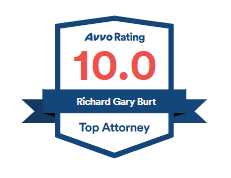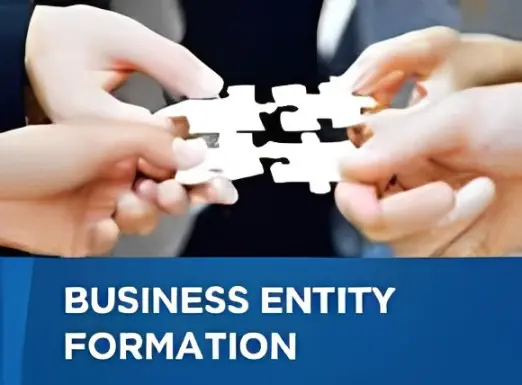
Richard Burt Professional Law Corporation
Mon - Fri: 9 AM - 6 PM
In communicating through a website with a lawyer you are thinking of hiring, you should not provide any confidential information concerning your legal matter until an attorney-client relationship has been formed.
Sending an email to Richard Burt or leaving a voice mail for him or his assistant (and a reply from either) does not create an attorney-client relationship.
No attorney-client relationship will be formed until you and Mr. Burt have agreed that he should represent you, he has determined that there is no conflict with an existing client, you have signed an engagement letter that sets forth the terms of the representation, and, when requested, you have made a fee deposit.
Please note that the initial consultation is solely to determine the nature of your legal matter and to discuss fees. Mr. Burt does not offer free legal advice.
After an attorney-client relationship has been formed, email (and voice mail) may of course be freely used for confidential attorney-client communications.
If we try to call you at a telephone number that you provide to us and are unable to reach you (and your voice mail is full or is not set up), we may text you at that number to let you know that we tried to call you. By sending an email via this website or by calling and leaving a voice-mail message, you consent to receiving such texts. At any time, you may reply STOP to opt-out from further messages.
NOTE: Mr. Burt does not handle litigation of any kind. If you wish to sue someone, are being sued, or need to make a court filing of any kind, Mr. Burt cannot help you. You should not contact him for those services.


Inconsistent Use of Entity Name Proves Costly
In Montgomery Sansome v. Rezai (March 28, 2012) 204 Cal. App. 4th 786, the court held that a construction contractor’s designation of an entity as a “general partnership” in a fictitious business name statement when the contractor was licensed as a limited partnership and the contractor’s use of a variant of the name under which the contractor was licensed did not necessarily mean that the contractor was acting as unlicensed entity.
In July 1997, Leonard Nordeman filed a certificate of limited partnership for “Montgomery-Sansome, LP” with the California Secretary of State. The certificate named Nordeman as a general partner.
Subsequently, Nordeman filed an application for a contractor’s license with the Contractors State License Board (CSLB). The license application stated that the entity was a “partnership,” and listed Nordeman as a general partner and listed two other individuals as limited partners. The application listed as the partnership’s business address the same address that was shown on the certificate of limited partnership. In October 1997, the CSLB issued license number 741713 to “Montgomery Sansome LTD.” The entity holding license number 741713 was a limited partnership.
The name on the contractor’s license contained three discrepancies with the name in the certificate of limited partnership: (1) the entity designator was “LTD” instead of “LP”; (2) there was no hyphen between “Montgomery” and “Sansome”; and (3) there was no comma after the main body of the name and before the entity designator. (To lawyers and judges, such minutia matter.)
In February 2008, Nordeman and his partners filed a fictitious business name statement for the contractor, listing the fictitious business name as “MONTGOMERY SANSOME LTD., L.P.” This introduced yet another name discrepancy in that the fictitious business name did not match either the name on the certificate of limited partnership or the contractor’s license. More important, however, the fictitious business name statement stated that the business was conducted by a “General Partnership.”
The contractor was hired to perform repairs at an apartment building. The contractor’s name on the construction contract did not match either the name on the certificate of limited partnership or the name on the contractor’s license but was similar to (but not identical to) the name on the fictitious business name statement. The contract listed contractor’s license number 741713.
The contractor subsequently sued the building owners for breach of contract and other causes of action. The owners defended on the ground that the contractor was not licensed. Business and Professions Code section 7031 (part of the Contractors’ State License Law) generally prohibits unlicensed contractors from recovering compensation for performance of work requiring a license.
On motion for summary judgment, the trial court ruled that the contractor could not recover from the owners because the business entity that contracted with the owners was a general partnership (as stated in the fictitious business name statement), which did not have a contractor’s license. The trial court ruled that the entity that did hold a license (the limited partnership that was issued contractor’s license number 741713) was a separate entity and not a party to the contract. Therefore the contractor could not collect.
On appeal, the contractor argued that there was a single Montgomery Sansome business entity, and the slightly different names used in different documents were just “trivial” variations on the name for that single entity. After an extended discussion, the court of appeal found that the evidence “would support a finding” that the name Montgomery Sansome Ltd. LP just referred to the licensed limited partnership and that there was no separate general partnership and remanded the case for further proceedings.
Comment
This case would never have happened if general partner of the contractor had simply used the name of the partnership as shown in the certificate of limited partnership filed with the California Secretary of State in all the subsequent documents, particularly the contractor’s license application, the fictitious business name statement, and contracts with owners.
Every business that is a corporation, limited liability company (LLC), or limited partnership should show its name in contracts, license applications, and other formal documents exactly as shown in the articles or certificate filed with the California Secretary of State.
Of course, many businesses operate under a fictitious business name (often referred to as a “DBA”), and they don’t care to use their formal legal name in dealings with the public or their customers. That’s fine, but in documents of important legal significance, it is often advisable to identify the entity by its formal legal name followed by “doing business as” and then followed by the fictitious business name. That avoids the confusion that temporarily derailed the contractor’s case discussed above, which no doubt cost significant legal fees just to get to the merits of the contractor’s case against the owners.
If for some good business reason the use of formal legal name followed by “doing business as” in contracts with customers is not desirable, it is possible to use just the DBA in the contract, but the business should make sure that it has properly published and filed a fictitious business name statement showing the entity’s name exactly as shown in the articles or certificate filed with the California Secretary of State. And the business should make sure that it renews the fictitious business name statement in a timely fashion.



